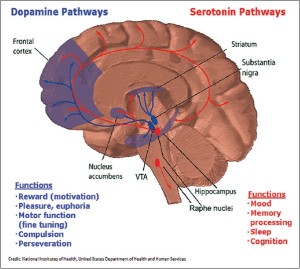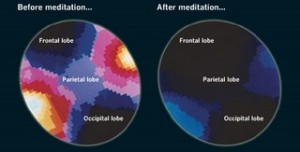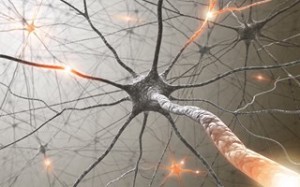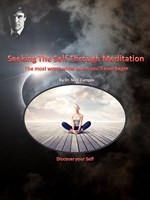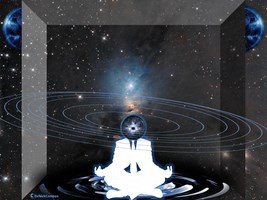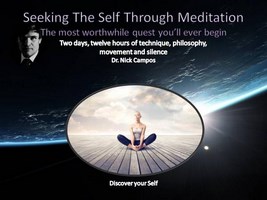 In the last post, I discussed the neurological basis of quieting the mind, along with some physical, mental, and spiritual benefits of taking on a regular practice. In this post, I would like to continue the conversation by discussing a few of the more common obstacles to quieting the mind, as well as some tips on overcoming them. And finally, I will share a simple exercise that you can use to kickstart your mind-quieting endeavors.
In the last post, I discussed the neurological basis of quieting the mind, along with some physical, mental, and spiritual benefits of taking on a regular practice. In this post, I would like to continue the conversation by discussing a few of the more common obstacles to quieting the mind, as well as some tips on overcoming them. And finally, I will share a simple exercise that you can use to kickstart your mind-quieting endeavors.
Common Obstacles to Quieting the Mind
Anybody who has ever tried to quiet the mind through mindfulness or meditation has invariably had the experience of becoming distracted. This is because, in its efficiency, the neurological mind has many automatic processes leading to an influx of sensations, thoughts, and emotions. It allows us to operate as complex beings without tying up our focused attention by moment-to-moment neural activity. Only through trying to quiet the mind does the practitioner become aware of how little control he or she has over the myriad of inputs flowing into consciousness. Despite the utility of this automatic mental activity, the flood of mental chatter that results can severely challenge a mind that is trying to obtain silence.
The mind wants to be in control – the more automatic its processes, the more it can focus on higher-minded activities, like socializing, theorizing, or creating. When the conscious mind (that which you are in control of) attempts to focus completely, at the expense of the influx of thoughts, the unconscious mind (that which you are not in control of) will create diversions to pull the conscious mind out of focus. It does so to resume the incoming thoughts and go back on autopilot.
The three primary distractions of the mind come from its focus on sensations, thoughts, and feelings. All three are ubiquitous and constant – experienced by all consciously aware people (albeit not always consciously). It is these distractors that we try to transcend during mindfulness or meditation. The first step is becoming aware of them, of how these distractors operate; and only then can we label and release them.
Three Primary Distractors of Mind
Sensations
 The first primary distractor of the mind comes from somatic or body sensations. Any stimulus picked up by the receptors of the somatosensory system would constitute a sensation. The four types of sensation are superficial, deep, visceral, and special. Superficial sensations include things like touch, temperature, pain, and two-point discrimination. Deep sensations include things like muscle and joint position, muscle force and effort, deep muscle pain, and vibration. Visceral sensations are related to the autonomic nervous system (ANS) and are things like hunger, nausea, and visceral pain (chest pain, stomach pain, etc.). Special sensations are what we call the five senses of audio, visual, olfaction (smell), touch, and taste. Equilibrium is also a special sense related to the inner ear and cerebellum.
The first primary distractor of the mind comes from somatic or body sensations. Any stimulus picked up by the receptors of the somatosensory system would constitute a sensation. The four types of sensation are superficial, deep, visceral, and special. Superficial sensations include things like touch, temperature, pain, and two-point discrimination. Deep sensations include things like muscle and joint position, muscle force and effort, deep muscle pain, and vibration. Visceral sensations are related to the autonomic nervous system (ANS) and are things like hunger, nausea, and visceral pain (chest pain, stomach pain, etc.). Special sensations are what we call the five senses of audio, visual, olfaction (smell), touch, and taste. Equilibrium is also a special sense related to the inner ear and cerebellum.
The sensory system picks up information from both the outer world and the inner being. It is a 24-hour job. Even as you sleep the nervous system senses and evaluates your lying position, the firmness of the bed, the softness of your pillow; it will make you aware of the room temperature, whether it is too hot or too cold. And it will awaken you if your bladder is full.
Since the somatosensory system is on at all times, taking in information from the internal and external environments, it is the first system to cause distractions when trying to quiet the mind. An itch on your nose, a pain in your buttock, the feel of your braces as they hug your teeth – any physical sensations come to the forefront when trying to quiet the mind. You become acutely aware of your varied sensations as you dive deeper into the practice of silence. Intentionally tuning in to your body sensations is a powerful exercise in its own right, one I walk my students through regularly. But when we desire to quiet the mind for meditation, we must shut down the senses and withdraw from the outer world.
The senses form the bridge between the inner and outer worlds. It is how we stay connected to the “reality” of material existence. But when it is time to turn inward, we can only do so by raising this bridge and shutting down the senses. In yoga, the process is known as pratyahara. The idea with pratyahara is that, until you dissolve all bridges to the external world, you will never go deep enough for Samadhi to take place. Pratyahara is specifically removing the awareness of sight, smell, sound, taste, and touch. While the sensations are still there, the mind has stopped attuning to them.
Thoughts
The next common distractor of the mind is the mind itself and its incessant production of thoughts. As I have already pointed out, the efficiency of the human mind has evolved to place many functions on autopilot – not only our physiology, but also our thoughts, ideas, visions, and self-talk. Even music we have recently listened to can enter a loop and replay repeatedly in our heads.
 There is an enormous propensity of the mind to create stories – real or fantasy – which can be so engaging that our mind gets carried away with its ruminations. This can lead to what we call daydreaming – or getting caught up in the progression of a tale. Daydreaming is a conditioned habit, with some people being more susceptible than others, but the more one does, the stronger the activity becomes. Daydreams usually stem from real-world events or sensory stimuli (noise, smell, conversation topic, or movie). These stories can be intense, vivid, pleasant, or unpleasant, and may come with characters, settings, and plotlines. Regardless of one’s susceptibility, every person has this aspect of their mind. It comes from the same source as imagination, so it is important to creativity and innovation, but also extremely disruptive when left to its own accord. It is not only a major challenge in the day-to-day conscious waking state, but especially when trying to quiet the mind.
There is an enormous propensity of the mind to create stories – real or fantasy – which can be so engaging that our mind gets carried away with its ruminations. This can lead to what we call daydreaming – or getting caught up in the progression of a tale. Daydreaming is a conditioned habit, with some people being more susceptible than others, but the more one does, the stronger the activity becomes. Daydreams usually stem from real-world events or sensory stimuli (noise, smell, conversation topic, or movie). These stories can be intense, vivid, pleasant, or unpleasant, and may come with characters, settings, and plotlines. Regardless of one’s susceptibility, every person has this aspect of their mind. It comes from the same source as imagination, so it is important to creativity and innovation, but also extremely disruptive when left to its own accord. It is not only a major challenge in the day-to-day conscious waking state, but especially when trying to quiet the mind.
The way to prevent this distraction from carrying your mind away during silence is to note when a story is happening, label it (“There is a story”), and allow it to fade away instead of following it down its unraveling path. We tend to follow a story unconsciously, almost as if passive witnesses to it, and watch it like a movie (not a bad perspective to develop, just in the wrong scenario or circumstance). Instead, when we consciously become aware that a story is unraveling, we can snap out of it by labeling the story (“There is…), which gives the conscious mind a concrete element to recognize and thus dismiss. Without awakening to the story’s unraveling and calling it for what it is, it is allowed to continue, remaining unconscious to the mind and allowing the passive component (daydreaming) to persist.
The goal is not to remove thoughts completely, as that would be impossible, but instead to allow the thoughts to happen without being carried away by them. An influx of thoughts will always be present, but the more experience one has in quieting the mind, the more one will be able to focus despite the neural/mental activity happening in the background. The best analogy I can use is of a computer that is on and executing functions; programs run in the background – virus scan, firewall, operating programs, and so forth – but the user is not following them or observing their operation. The user is simply employing the system for its intended use, while the programs operate unnoticed in the background. This is how the conscious mind should respond to mind chatter: give no attention; simply focus on an object or release all focus altogether, and just allow the mind to float within pure presence, beyond any sensation, thought, or emotion.
Feelings
 Emotions are the next primary distractor of the mind, especially when highly charged. Every person has had the experience of being so angry, hurt, or upset that they could not think straight. Their minds went on overdrive, and they could not stop thinking about what had gotten them riled up. Alternatively, every person can relate to being infatuated with someone, something, or some experience, such that their mind repeatedly loops back to their infatuation: they cannot stop thinking about it. Both are the consequence of an emotionally charged mind.
Emotions are the next primary distractor of the mind, especially when highly charged. Every person has had the experience of being so angry, hurt, or upset that they could not think straight. Their minds went on overdrive, and they could not stop thinking about what had gotten them riled up. Alternatively, every person can relate to being infatuated with someone, something, or some experience, such that their mind repeatedly loops back to their infatuation: they cannot stop thinking about it. Both are the consequence of an emotionally charged mind.
When the mind is highly charged, it is practically impossible to silence it. Unfortunately, this is the steady state for many people, as they spend most of their waking consciousness highly charged about one thing or another. When chronic or extreme, highly charged emotional states can lead to what we label as mental illness. Not only is an emotionally charged mind a distraction to quieting the mind, but overall, it is unhealthy for the individual.
The answer to neutralizing this state of mind is far too involved for this article, but a powerful tool for overcoming it is available. Anybody interested in learning how to dissolve their highly charged emotional states should contact me. In the meantime, one can get beyond their emotions in the same way they transcend their thoughts: by becoming aware of the emotionality, labeling it, and then letting it pass. Like thoughts, emotions can lead to a story being run through your mind. Your mind can then attach to it and follow along passively, or you can notice what is happening, label it with, “There is an emotion,” and then let it fade away. The great sage, Sri Ramana Maharshi advised, “Let what comes come. Let what goes go. Find out what remains.” You may find that what remains is more real than transient emotions.
Sleep
 Closely associated with, yet opposite to, sensation is sleep: the complete loss of awareness of our senses. While sensations themselves are still up and running, our conscious awareness of them is not. Unless we become uncomfortable, we will remain unconscious of the outer world (not true while dreaming).
Closely associated with, yet opposite to, sensation is sleep: the complete loss of awareness of our senses. While sensations themselves are still up and running, our conscious awareness of them is not. Unless we become uncomfortable, we will remain unconscious of the outer world (not true while dreaming).
When attempting to shut down the mind and enter silence, the unconscious mind will work hard to regain control and it will do so through the common distractions: sensation, thought, and emotion. If the focus of the practitioner is too strong for the unconscious to overcome, then it will often go to its big gun and try to shut the consciousness down completely and send the practitioner into slumber.
This is by far the most difficult distraction for the conscious mind to overcome, but with practice, it can be done. The first thing to note is that if you are lacking sleep, it will be incredibly difficult to keep from dozing off. In those moments, it is best to just stop your practice and take a quick catnap. Even fifteen minutes can recharge you and allow the mind-quieting to happen.
The second point to note is that if you are not particularly tired, your mind is instigating the drowsiness. Just the act of becoming aware is sometimes enough to overcome sleepiness. Along with a conscious effort to focus on an object (or mantra), by withdrawing the senses, you can submerge into a true meditative state.
Sleep is a last-resort effort by your unconscious mind to take control of its function. If you can overcome that, you are on your way to laser-focus awareness and, ultimately, to meditation and what the yogis call samadhi.
Quieting Exercise
I would like to share a simple quieting exercise that you can do anywhere and at any time.
 Begin by sitting quietly on the floor or straight up in a chair. If seated in a chair, make sure your feet are flat on the floor. Have your hands folded in your lap, or palms face up on your thighs. Your chest should be up, chin straight, and eyes closed. Focus on your breath. Abdominal breathing is ideal (and if you do not know how, watch this video). You want the breath to reach a deep, long, rhythmic pattern.
Begin by sitting quietly on the floor or straight up in a chair. If seated in a chair, make sure your feet are flat on the floor. Have your hands folded in your lap, or palms face up on your thighs. Your chest should be up, chin straight, and eyes closed. Focus on your breath. Abdominal breathing is ideal (and if you do not know how, watch this video). You want the breath to reach a deep, long, rhythmic pattern.
You should count your breaths up to five at first, inhaling and exhaling for one full breath. After five breaths, return to one – that is a round. Do two to five rounds. It will allow your mind to focus and not fall into passive automation. Once you feel confident that focus has been established, put your attention to your jaw – relax it; let the tongue drop away from the palate. Relax the corners of the mouth and let them drop toward the jaw. Then bring your attention to your cheekbones – let them melt downward toward your earlobes. This will release tension in your inner ear. Finally, bring your attention to the bridge of your nose. Imagine a dark, warm hole at the bridge sinking into the cranium toward the brain. These exercises are elements of pratyahara or sensory withdrawal. You can also pay attention to your hearing. Concentrate on an audible sound; within time, the auditory system will tire, and the attention will shift inward. This is Pratyahara.
Once you have reached a satisfactory state of sensory withdrawal, then just observe; invariably you will begin to become aware of physical sensations. Maybe a hair clings perceptibly to your forehead, or perhaps you feel tension in your neck and shoulders; whatever the case may be, simply become aware of the sensation and it will lessen the impact of the distraction. Feel free to scratch an itch or brush your hair off your forehead – no need to be uncomfortable – but then label the sensation by saying quietly in your mind, “There is an itch,” or, “There is back pain,” and so on. And then return the focus to the breath. The simple acts of attaining awareness, labeling distractions, and letting them go removes the distraction from your mind’s attention.
You might also have incoming thoughts about your day, particular events, or even people. Here again, without judgment on the thoughts, simply label them by saying quietly in your mind, “There is a thought about…” And then let it go.
The thought that comes may have a strong emotion tied to it, or you may even have the feeling of an emotion without an associated thought. Whether a conscious or unconscious emotion, label it, and then let it go. You do not have to understand the emotion in the moment; you certainly do not have to resolve any conflicts in the moment. No need to judge yourself or the emotion – simply become aware of its presence, label it, and then let it fade away. Bring your attention back to the breath.
Continue this exercise of withdrawing the senses, bringing awareness to and labeling distractors, and letting them go, and you have a powerful beginning exercise to quieting the mind at your disposal.
There is more you can do to reach the deeper states of meditation, but I will leave this for another article altogether. Practice the simple exercise I have outlined here to kick-start your mind-quieting practice. If you have an interest in learning the deeper secrets to a profound meditation or mindfulness practice, then please contact me. But this tool for reaching greater states of silence through pratyahara will get you far if you practice diligently. I trust you will have enormous success in your endeavors.


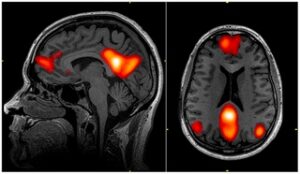



























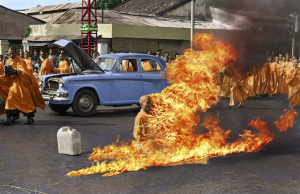


 More importantly, they happen without our taking notice. We do not have to think about our every action. We do not have to initiate every move, only the decision, and sometimes not even that. By freeing our mind of these routine actions, we are able to concentrate more on complex actions and behaviors, we are able to think about abstract ideas, and we are able to self-reflect (as far as we know, the only species that does this). Complex thinking has led to the creation of musical masterpieces, mathematical theories, and technological innovations. It has inspired timeless art, revolutionary science and allowed us to ask and ponder the great philosophical questions of life, those that give our lives meaning. Without an automation of our primary thought system, it is questionable whether we’d have ever accomplished anything more than our most basic survival. Automation of thought is the first and foremost system used by the brain on a regular basis. More than ninety percent of our day is made up of habitual actions. According to Daniel Kahneman, Nobel Prize winning psychologist and economist, ninety-eight percent of our mental processes are of the automatic, effortless, and unconscious kind, even though we tend to believe we are making rational decisions throughout the day. Most people are thus walking through life effortlessly unaware, allowing their automatic thoughts to flow in and out of consciousness, and create a stream of time which ultimately frames their experiences. I like to call this unconscious consciousness – consciously awake, just not aware.
More importantly, they happen without our taking notice. We do not have to think about our every action. We do not have to initiate every move, only the decision, and sometimes not even that. By freeing our mind of these routine actions, we are able to concentrate more on complex actions and behaviors, we are able to think about abstract ideas, and we are able to self-reflect (as far as we know, the only species that does this). Complex thinking has led to the creation of musical masterpieces, mathematical theories, and technological innovations. It has inspired timeless art, revolutionary science and allowed us to ask and ponder the great philosophical questions of life, those that give our lives meaning. Without an automation of our primary thought system, it is questionable whether we’d have ever accomplished anything more than our most basic survival. Automation of thought is the first and foremost system used by the brain on a regular basis. More than ninety percent of our day is made up of habitual actions. According to Daniel Kahneman, Nobel Prize winning psychologist and economist, ninety-eight percent of our mental processes are of the automatic, effortless, and unconscious kind, even though we tend to believe we are making rational decisions throughout the day. Most people are thus walking through life effortlessly unaware, allowing their automatic thoughts to flow in and out of consciousness, and create a stream of time which ultimately frames their experiences. I like to call this unconscious consciousness – consciously awake, just not aware. While many people turn to drugs and alcohol in a futile attempt to quiet the mind-chatter, these mind-alterers actually make matters worse over time. The only way to diminish mind-chatter is to pull the mind into attention. That’s why sports and exercise have been popular since antiquity. By focusing on a physical activity, the mind is forced into what Kahneman calls system 2 thinking, or one which is done with our conscious mind – conscious consciousness – effortful, intentional, and controlled. Making art and music are also amazing mind-chatter reducers. So is doing math, or thinking about anything in detail, like when you strategize or follow a protocol. Anything which forces the mind to focus reduces mind chatter (one reason smart phones have become addictive). However, even these activities, when done repeatedly can become automatic. Without a doubt, people strive to make automatic as many of their activities as possible. We call this mastery. And mastery makes what was once effortful a habituation. As a result, once we master an activity, it does have the potentiality to become an automatic process.
While many people turn to drugs and alcohol in a futile attempt to quiet the mind-chatter, these mind-alterers actually make matters worse over time. The only way to diminish mind-chatter is to pull the mind into attention. That’s why sports and exercise have been popular since antiquity. By focusing on a physical activity, the mind is forced into what Kahneman calls system 2 thinking, or one which is done with our conscious mind – conscious consciousness – effortful, intentional, and controlled. Making art and music are also amazing mind-chatter reducers. So is doing math, or thinking about anything in detail, like when you strategize or follow a protocol. Anything which forces the mind to focus reduces mind chatter (one reason smart phones have become addictive). However, even these activities, when done repeatedly can become automatic. Without a doubt, people strive to make automatic as many of their activities as possible. We call this mastery. And mastery makes what was once effortful a habituation. As a result, once we master an activity, it does have the potentiality to become an automatic process.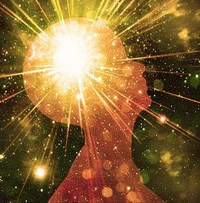






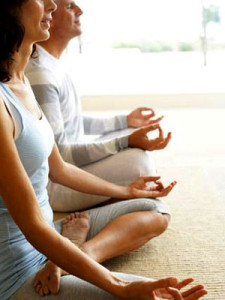

 The quest to “find” the Self can be carried out by a number of paths. One such path is meditation.
The quest to “find” the Self can be carried out by a number of paths. One such path is meditation. 